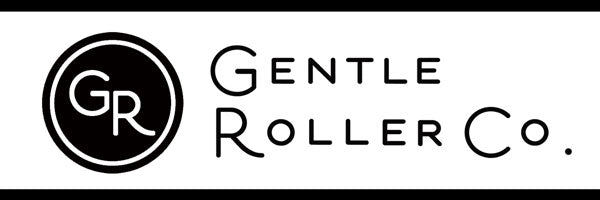Full Demonstration - Simple Nuno Felt Scarf
There are so many things that you can create on the Gentle Roller that making a single demonstration video that satisfies the needs of every felt maker is impossible. See the gallery of GR owner's work here.
Having said that, there are some basic principles that we follow and are best practice for most felt makers.
The experienced felt maker will find their way using the guidelines we recommend in combination with their own methodology. The novice can use the guidelines in combination with the instructions they receive in their felt classes, instruction books or other resources as they learn to felt.
We put this video together in 2019 as part of our blog page. It is a generic and simple demo where we highlight the Super-soft drive roller and introduce prospective new owners to the basic principles involved in using The Gentle Roller.
The first of these principles is to ensure as much of the fabric is exposed to the outer idle rollers as possible during the rolling process. This is achieved by utilizing false ends and special folds and changing the direction of rolling. These actions ensure the felting is even across your piece.
The second related principle is to roll in short runs. Felting is all about agitation of the fibres. Long runs tend to flatten and compress the woolen fibres together making them more resistant to felting. Four runs of 250 cycles are significantly more productive than one run of 1000 or even 2000 cycles. Starting will small runs ensures the commencement of felting throughout your work and sets the foundation for a superior piece.
The third principle is that it is not necessary to check your material at every 250 cycles change over. However, it is good practice to check at least every 1000 cycles as your material will dry out the more cycles you complete.
Those of you who watch through the entire demonstration below will see that we recorded every single second of footage so you could see there were no shortcuts or video tricks (many parts are shown in high sped just for convenience). We filmed in our garage in the middle of winter during some heavy squalls and at times you will hear rattling and scratching of tree branches against the tin walls.
In several of the sped-up portions of video you’ll see Joni talking towards camera. This was usually just idle chatter to Philip behind the camera. Normally we would be doing something else - reading, tidying, making a coffee, whatever, but we wanted to be 'with the camera' for the demonstration. It would also have been possible to do two projects concurrently which would have been significantly more productive, but we didn't want to confuse viewers with another concept of efficiency.
Finally, our apologies for the quality of the camerawork and colouring. We were using an old tablet in a dull and poorly lit garage under cloudy skies.
The demonstration video is cut into six key sections.
Part 1 – Introduction and lay-up
We have assumed the user already knows how to felt and lay-up their wool and fabrics. We skip through the actual laying on fast forward. The video is worth watching for the commentary in the second half.
Part 2 – First 1000 rolling cycles
We take you reasonably slowly through the first 1000 cycles completed in four sets of 250 cycles. This video shows how to execute a false end or special fold. Worth noting is how easily the fabric can be manhandled between plastic sheets. Also worth noting is that we do not check the scarf at each change of end as it is not necessary - there will be only minor progress. Checking is only done after the completion of 1000 cycles.
Part 3 – Second 1000 cycles
We work through most of this at a reasonably quick pace. It’s worth watching for the false ends which are performed in a different manner to the first 1000 cycles.
Part 4 – Third 1000 cycles
This is a repeat of part one and worked through quite quickly.
Part 5 – Using the Fulling Drum
A reasonably detailed introduction to the fulling drum. Worth watching because it shows that there is no loss of tactile involvement with your felt even though you are using the drum to complete the actual fulling. While a small item like the scarf could be easily fulled by hand, the video introduces you to how the drum is used which will more valuable when making a large item.
Part 6 – The finished nuno felted scarf
A quick look at the finished item.
More detailed information on the Gentle Roller and more special tips and tricks are documented in our General Roller User Guides and discussed in the Gentle Roller Blog. These are additional resources which are only accessible to General Roller owners.

